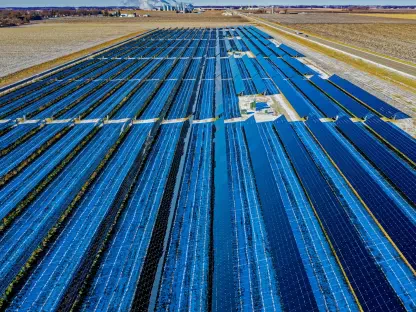The recent initiatives at Van Nuys Airport (VNY) represent a bold step toward achieving sustainability in the aviation industry. By implementing pioneering emissions reduction measures, VNY is setting an example that may redefine standard practices for general aviation airports nationwide. With a dynamic approach incorporating both policy enforcement and financial incentives, VNY aims for a complete transition to zero-emission ground service equipment (GSE) by the start of 2030. This ambitious project involves the launch of two key initiatives: the Zero-Emission GSE Policy and the Zero-Emission GSE Incentive Program, both of which underline the pressing need for environmentally responsible operations within the aviation sector. These efforts not only demonstrate a commitment to significantly reducing greenhouse gas emissions but also highlight the intricate planning and stakeholder cooperation involved in executing such a transformative change. Through these comprehensive measures, VNY is not only contributing to the reduction of its carbon footprint but also paving the way for other institutions to follow suit in prioritizing sustainable practices as the industry transitions toward a greener future.
Groundbreaking Policies and Incentives
The cornerstone of the initiative is the Zero-Emission GSE Policy, a mandate that requires all ground service equipment at Van Nuys Airport to be replaced with zero-emission alternatives by 2030. The importance of this policy lies in its goal to significantly diminish the environmental impact of the airport’s operations, emphasizing an innovative approach to traditionally high-emission activities. The implementation of this policy involved active collaboration with community members and relevant stakeholders to ensure that the transition would be both feasible and beneficial on multiple fronts. In complement to the policy, the Zero-Emission GSE Incentive Program provides a substantial financial boost to encourage the adoption of cleaner technologies. The program offers $250,000 in reimbursement grants, prioritizing the replacement of high-emission vehicles and ensuring that older models are either scrapped or removed from California altogether. This financial incentive is a crucial component of the overall strategy, easing the transition for operators by offsetting costs and encouraging quicker adoption of the new technology. Through this multifaceted approach, VNY is not just reducing emissions but redefining what is possible in sustainable aviation operations.
Environmental Impact and Broader Trends
As part of a broader environmental strategy, Van Nuys Airport’s initiatives are anticipated to yield significant benefits. By 2030, the measures are expected to cut nitrogen oxide emissions by over 2.29 tons and reduce carbon dioxide equivalent emissions by 465 metric tons, an achievement comparable to preventing the combustion of 52,000 gallons of gasoline. These reductions exemplify how a focused approach on emissions management can lead to substantive environmental improvements while enhancing air quality for surrounding communities. The focus on environmental responsibility at VNY is part of a larger trend set by Los Angeles World Airports (LAWA) toward achieving carbon neutrality by 2045, a target that emphasizes integrating sustainability into every facet of airport operations. The collective impact of these efforts is a testament to the growing recognition within the aviation industry of the vital role it must play in the global push toward reducing greenhouse gas emissions. The collaboration between VNY and local air quality management authorities symbolizes an essential partnership, aimed at safeguarding environmental quality while maintaining operational efficacy.
A Model for Future Aviation
Van Nuys Airport (VNY) has embarked on an ambitious journey toward sustainability within the aviation sector. By introducing cutting-edge emissions reduction strategies, VNY is setting a national precedent for general aviation airports, potentially altering current practices. This forward-thinking initiative is characterized by a blend of policy enforcement and financial encouragement, with the goal of transitioning entirely to zero-emission ground service equipment (GSE) by early 2030. Two primary undertakings have been launched: the Zero-Emission GSE Policy and the Zero-Emission GSE Incentive Program. These initiatives underscore the urgent need for eco-friendly operation in aviation. VNY’s commitment goes beyond reducing greenhouse gases, showcasing thorough planning and collaborative efforts from stakeholders to enact this transformative shift. Through these comprehensive strategies, VNY is not only decreasing its carbon footprint but is also leading the charge for other airports to adopt sustainable practices, supporting the industry’s move toward a greener future.









